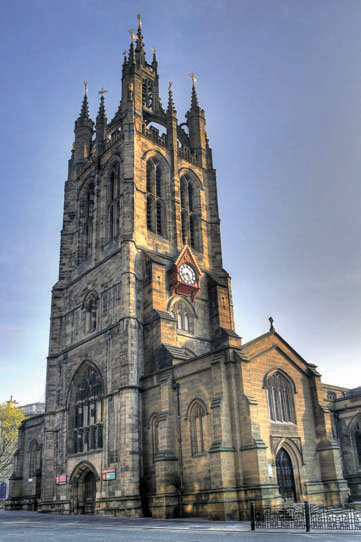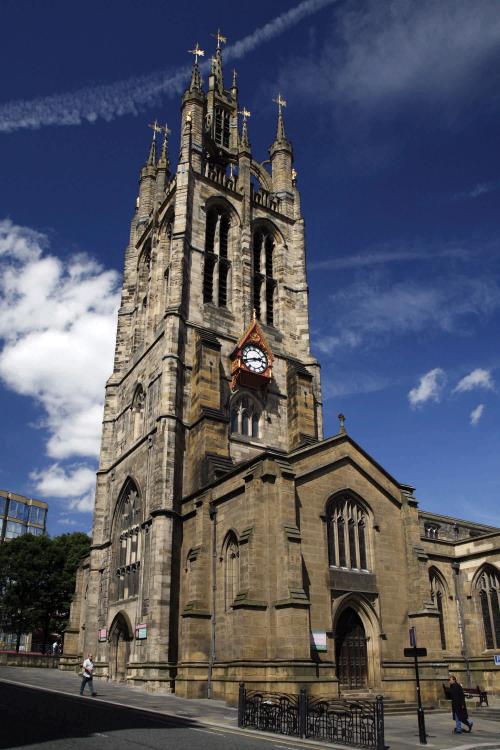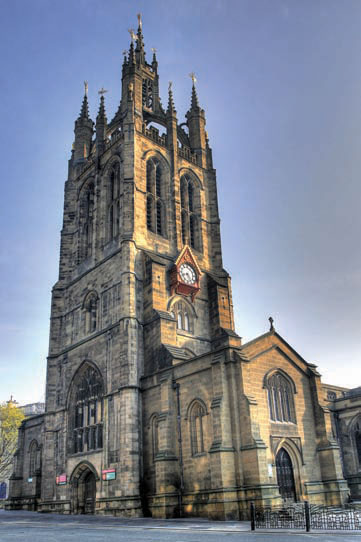Dating mainly from the 14th and 15th centuries with additions such as the 18th century library, the Grade I Listed Cathedral retains many important features. Key among these are the early 15th century font, 16th century lectern and the organ that was built in 1676 and is still played today.
With strong links to the sea and the Tyne the Cathedral’s spire, built in 1448, served as a navigation point for ships in the Tyne for over 500 years. There is a memorial in the Cathedral to Danish seamen who died in the Second World War.
One of the most important English concerto composers of the 18th century Charles Avison was born, worked and died in Newcastle. In 1736 he was appointed organist at St. Nicholas Cathedral (then church), giving him both a regular income and musical status.
Inside the Cathedral a monument celebrates Admiral Lord Collingwood, who played a central role in the Battle of Trafalgar in 1805 and successfully concluded the battle after Nelson was mortally wounded. He was baptised and married in St. Nicholas and each year a wreath is laid in his memory in front of the monument on 21st October, the date of the Battle of Trafalgar.
The Cathedral plays a focal role in the lives of many of Newcastle’s residents and holds many special services, events and exhibitions.



